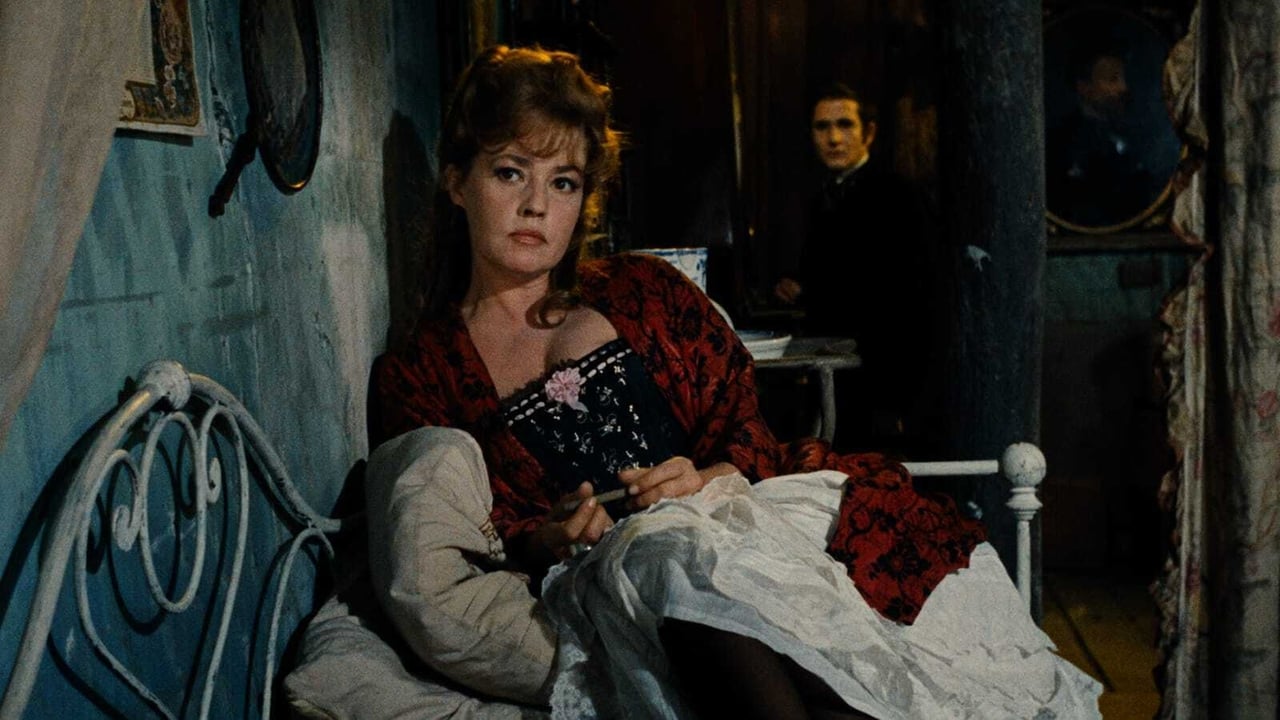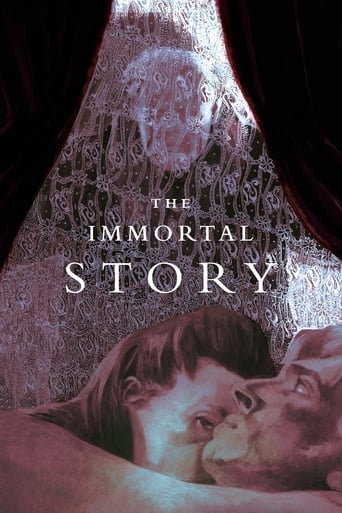

Orson Welles directs based on a novel by Isak Dinesen a story about an Ebenezer Scrooge type, the miserly rich old man who doesn't believe in stories and prophecies, who hears a story about a sailor picked up by an old man in a harbor to sleep with a beautiful woman and decides to make the story happen in real life, "so that at least one sailor can tell it from beginning to end, like it happened". This is like an essay on fiction, or like a charcoal sketch, except the charcoal in Welles' hand leaves smudges and we get those smudges as handprints on the canvas because The Immortal Story seems to talk about the anxieties of a storyteller and a magician but also of an aging man and an exile. In parts of the static, dour, style, he channels Bergman, old Dreyer, Beckett, his own work, there's a beautiful piano accompaniment and Jeanne Moreau, in her Pierre Cardin attires, looks ravished and ravishing at the same time. In the end the story is reenacted for the old man's benefit and to his satisfaction, but the sailor leaving the mansion refuses to tell it to anyone because who would believe him anyway. Perhaps Welles is telling us that some things, the important ones in life, we tell as stories because no one would believe us otherwise, so that in the world of imagination they can become as real and so communicate their truth, and inversely that perhaps all stories in the world happened somewhere to someone in some form, and we only hear their echo through the centuries. Or even that we're all as characters in a story, moving at the bidding of a higher authority that pulls the strings, but it's our right and choice to tell our story or not. Food for thought.
... View MoreThis was Orson Welles' only film in color apart from the documentary F for Fake which he made in 1973. After this film he sadly did not get the change to write and direct more movies. As mentioned before he made one documentary in the seventies, shot sections of the movie Other Side of the Wind (never finished it), made a bunch of commercials and starred in horrible movies (apart from The Kremlin Letter, Waterloo, Catch 22, A safe Place, Ten Days Wonder and Get to Know Your Rabbitt). So the only great thing we have from Orson Welles as a pioneer movie director during the last 20 years of his live (he died in 1985) is Chimes of Midnight (1966) and this film which he made in 1968 for french television. This film is short and excellent. The way Orson uses color celluloid is spellbinding, i've never seen anything like it, he uses red and green colors like a painter and projects a certain eerie feeling seldom seen in cinema. The story is a typical one by Welles. A rich and powerful older man is lonesome in his mansion and only wants to be loved. For those of you who love cinema, this film is a must see by one of the greatest directors of all time. Based on a story by danish writer Karen Blixen.
... View MoreHaving said that, it's strictly an art piece about a bankrupt merchant (ORSON WELLES) who for some unknown reason wants to turn a myth into reality by hiring two people to play out the theme of a story the townspeople have turned into a myth.The setting is Macao, China and the slow moving tale is narrated by Welles as Mr. Clay, a bitter old man with a faithful servant/assistant. Welles, by this time in his career, had deteriorated physically to the point where some of his dialog is hard to understand since he barely moves his mouth when he speaks.He pays his assistant to locate a woman and a sailor who can reenact the tale inside his own palatial house. JEANNE MOREAU is the young woman who agrees to play her part in "the comedy" after being assured that she will be paid handsomely for her contribution to making the old man's story come to life. Moreau talks and talks to the assistant about her background in this very literary tale where there is so little movement to propel the story forward.Mr. Clay himself chooses the sailor, a tattered looking blond whom he invites to his home with the promise of five guineas. And he talks and talks and talks. "It's hard on you being so old and dry," the sailor tells Welles. And indeed, Welles, as Mr. Clay, does look old and dry beyond his seventy years. But Mr. Clay is intent on making a tale that has been invented really happen.Handsomely photographed in subdued color, it's a very enigmatic tale that really doesn't make much sense when it's all over. Chalk it up to another pretentious bore from Welles, who based his screenplay on a novel by Isak Dinesen (author of "Out of Africa").Summing up: A misfire and enigma that Welles originally planned as part of an anthology of stories.
... View MoreThis is a very tight ,though highily clestophobic movie, with a simple, almost bed-time-story simplistic script. Nonetheless it is a powerfull message, superbly given...Enjoy!
... View More